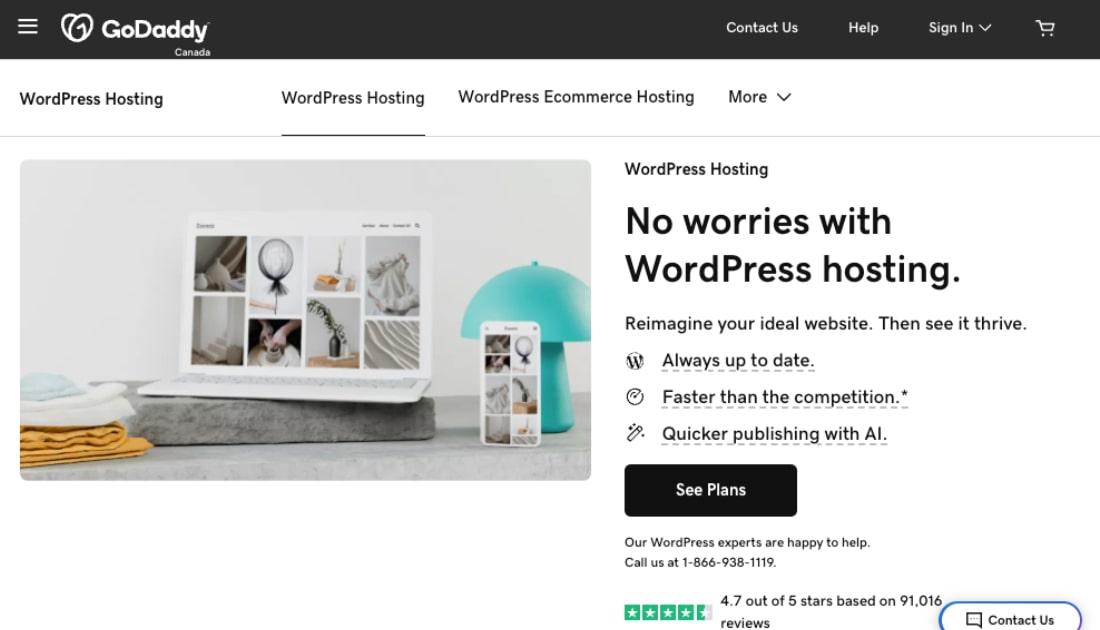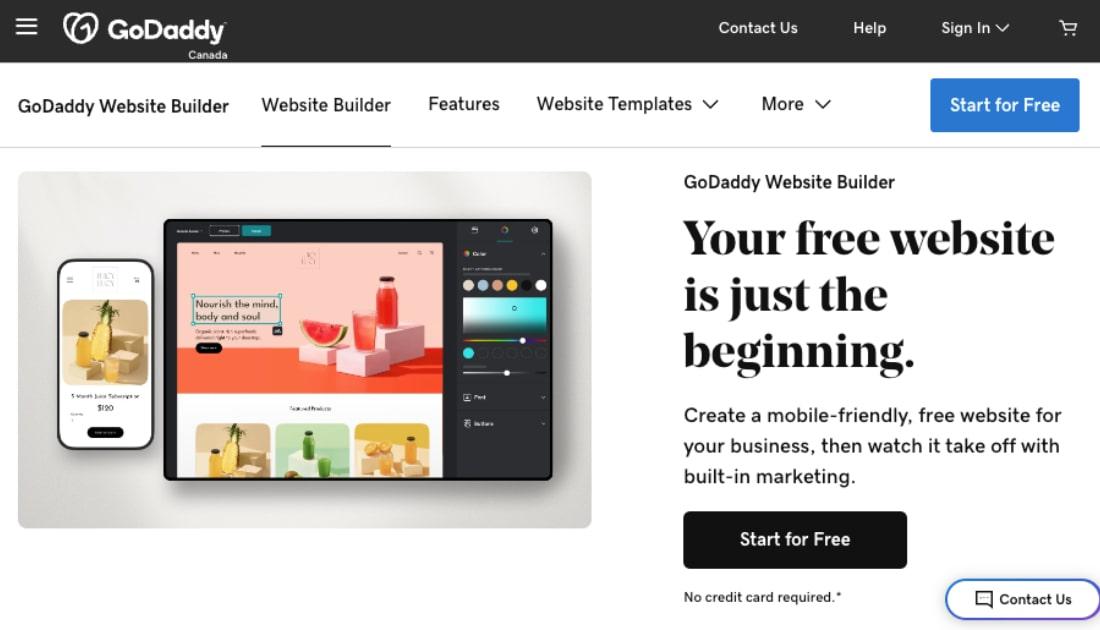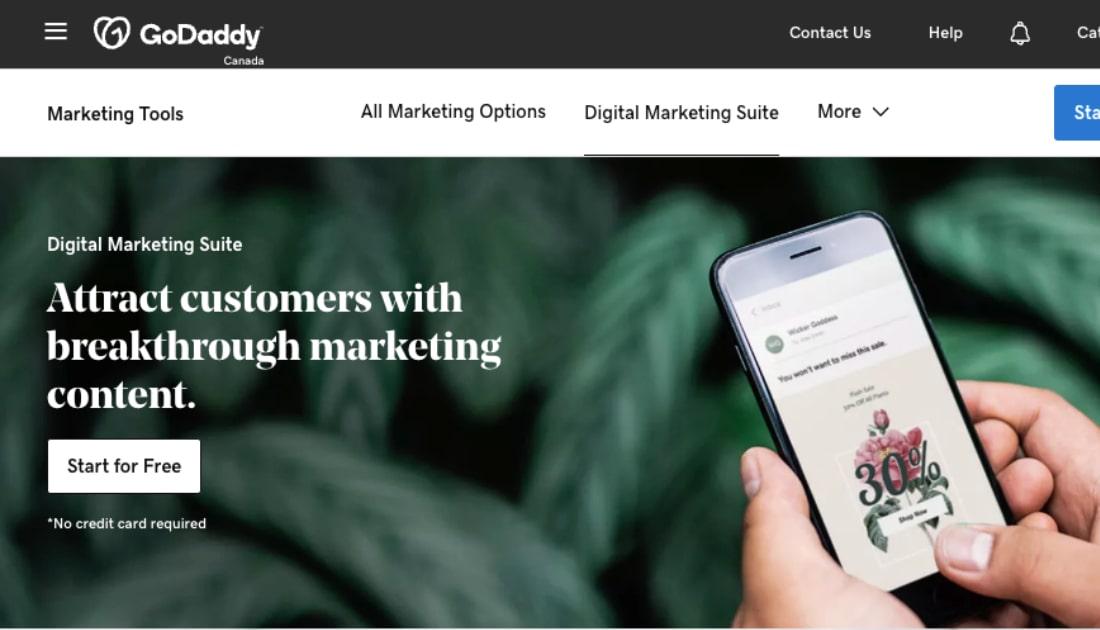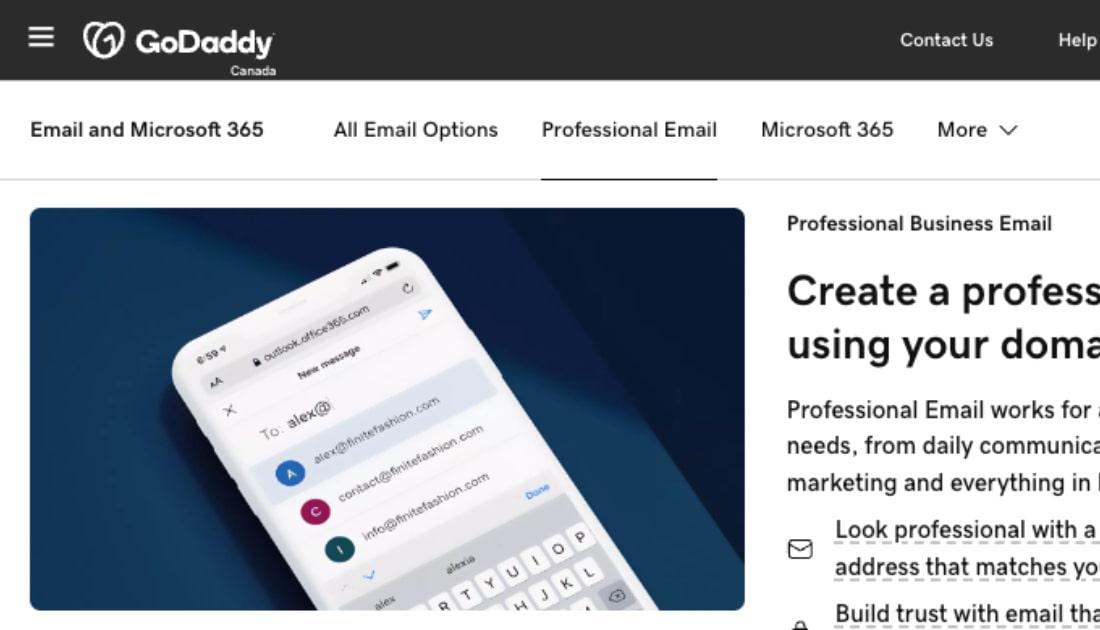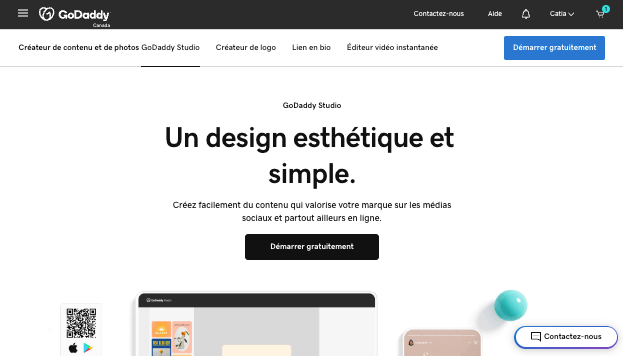You spent weeks planning and creating content for your new website. You used a fantastic application, like GoDaddy’s Website Builder or WordPress Hosting (all annual WordPress Hosting plans come with a free domain included), and the site is absolutely gorgeous. You finally launched, and now you’re sitting back just waiting for the readers and leads to roll in. But then, nothing happens. You’re left wondering how to get traffic to your website.
How to get traffic to your website with these 11 tips
Websites don’t just launch and start attracting audiences, and traffic doesn’t simply grow on its own. You must employ strategies to draw people to your site and boost your page views.
-
Boost organic search rankings.
-
Utilise search engine marketing.
-
Regularly publish content.
-
Repurpose and republish content on other sites.
-
Guest post on other sites.
-
Engage in digital PR.
-
Send regular emails.
-
Create a social media editorial calendar.
-
Pay for social promotions.
-
Reach out to social influencers.
-
Repeat your successes.
You have to be proactive and work to grow your page views and draw in visitors. The rest of this post will offer suggestions on how to get traffic to your website.
1. Boost organic search rankings
When we look at how to get traffic to your website, one of the best ways is boosting organic search rankings. When you appear at the top of search engine result pages (SERPs), more people will find you, which drives more traffic to your website. To get to the top of SERPs, you need to have a strong search engine optimisation (SEO) plan that continually works to boost your rankings. That plan must include:
- Keyword research — Identify the keywords that your target audience uses to search for products, services and topics related to your business. Using keyword research to discover and target those terms and phrases will help customers find you when searching.
- On-site content optimisation — Once you know the keywords that will attract your target audience, optimise pages on your site to target those keywords. Using one targeted keyword per page increases your chances of ranking for the assigned term or phrase.
- Content — Fresh content is a significant ranking factor that search engines use in their algorithms, so create an editorial calendar and regularly publish content about your industry and offerings.
- Link building — Search engines also give higher rankings to websites that have a lot of links pointing to them, so develop a strategy that encourages high-quality sites to link back to yours. Figuring out how to get traffic to your website often entails reaching out to other online properties.
- Technical SEO — Behind-the-scenes factors like site speed, sitemaps, responsive design and structured data are among the many technical upgrades that can boost your site’s rankings.
- Local SEO — Search engines often give ranking priority to businesses that are located in the area of the searcher. So to boost your appearance in SERPs, engage in local SEO and register on local business listings to make it easier for nearby customers to find your site.
2. Utilise search engine marketing
While organic SEO is an effective way to drive traffic to your website, it takes time and resources to develop a strategy. It might take weeks, months or even years to fully establish powerful organic SEO traffic drivers.
In the meantime, you can drive traffic to your site through search using pay-per-click (PPC) advertising. PPC advertising is a type of search engine marketing where you pay for visibility on SERPs. You choose specific keywords to target, and you pay each time a user clicks on the ad. This tactic is a great way to drive traffic while building up your organic SEO.
3. Regularly publish content
As mentioned earlier, search engines love to see fresh content on a website. Regularly publishing on your site helps boost your search rankings. But that’s just one way that content helps you get traffic to your website. Regularly blogging and producing content on your site also drives traffic because:
- It gives readers a reason to visit your site — If your site never has anything new, there’s no reason for readers to return. New content gives audiences an incentive to visit again.
- It gives readers a reason to stay on your site longer — When audiences reach your site, they will visit more pages if there is more content to read.
- It provides content to share on social media — When you have a lot of content on your website, you increase chances your readers will share it, driving other audiences back to your site.
- It gives other sites something to link to — Links back to your site are important for SEO. Valuable content on your site helps you get links because other websites can link back to your pages as resources and sources.
To simplify content production, use a content management system (CMS) like WordPress. This platform makes it easy to add content and incorporate tools like the Yoast SEO Plugin that helps with keyword research and on-site content optimisation. The WordPress-Yoast combo can be a real game-changer when you’re figuring out how to get traffic to your website.
4. Repurpose and republish content on other sites

On-site content works for you, as you learn how to get traffic to your website. But your content doesn’t always have to exist on your website to drive traffic. You can repurpose content and publish it on other sites to set up breadcrumbs that lead audiences from third-party sites back to you. To execute this strategy:
- Follow republishing best practices — It’s important to note that there are rules against publishing duplicate content on multiple webpages or websites. So be sure to know and adhere to these restrictions (or risk getting a search penalty).
- Turn content into something new — Turn blog content into a new medium that fits other popular content sites. For example, you can turn a blog into a video and publish it on YouTube, or create a slideshow that you publish on Slideshare.
- Always link back to your website or the original piece of content — The goal is to get new content to drive traffic to your website, and the best way to do that is by including a link and a call-to-action that tells the reader to visit your site for more information.
As you create these breadcrumbs, always be thinking of what value you can provide to your readers. That way, when they get to your site, they’re enticed to read more.
5. Guest post on other sites
Guest posting is the process of writing a post that will be published on the blog of another website. While this might seem like a strange strategy (why give another site valuable content?), it can be an extremely effective way to drive traffic back to your own site.
Not all guest posting produces the same results, so when considering how to get traffic to your website, keep these best practices in mind:
- Look for blogs that share your audience — The goals of writing guest posts are to reach your target audience. So don’t publish posts on sites that your ideal customers would never use. Only focus on writing for sites that attract exactly who you want to reach.
- Link back to your site in the guest post if possible — The rules and guidelines for every guest post will be different. Look for sites with rules that allow you to include links back to your website, as the links are what helps drive readers to your website.
- Write a strong author bio — Whether you can include links in the content or not, always focus on using your author bio as another driver to your site. Construct an author bio that both says who you are, and also gives an incentive and call-to-action for the reader to visit your site.
When you publish content on a blog that has a large readership, you connect with a new and engaged audience. You introduce yourself, your ideas and your website to these readers, which often sends traffic back to your site.
6. Engage in digital PR
Submitting content to other sites is a good way to drive traffic back to your site. But you don’t always have to create the content to get your site mentioned on another site. You can also engage in digital PR.
eDigital PR is the process of reaching out to news or industry blogs and encouraging them to cover a story related to your business. Each time your business does something interesting or engaging — such as publishing a valuable study, releasing a unique product or service, hosting an event, etc. — reach out to relevant publications to see if they want to write about you.
7. Send regular emails

As you learn how to get traffic to your website, another skill you need is list building. This means using marketing and incentive strategies to get people to join your email list. To use email marketing to drive traffic to your site, keep a few things in mind:
- Use a professional email marketing software — You can’t properly manage an email list through your basic email account. Use a professional software like GoDaddy Email Marketing so you can send emails to hundreds of people at a time.
- Send emails each time you publish a new post — Let people interested in your brand know when you publish new content on your website. Send an email to your list to promote and drive traffic to each of your new posts.
- Create a topical email series — Also use your email list to drive traffic to old posts. Set up an email series that focuses on a specific topic, and drive traffic to old blog posts that relate to the theme.
- Always be listing building — The bigger your list, the more traffic you will drive to your site when you send out an email. So always engage in strategies that help grow your list.
This tactic is important for increasing traffic because when you have a list of contacts, you can email them links to your newly published content, which then drives traffic to your site.
8. Create a social media editorial calendar
You can also encourage interested audiences to visit your website by promoting your new content through social media marketing. To get the most attention for posts promoting content on your site:
- Create custom graphics for each social site — Each social media platform has unique dimensions for images that work best on their sites. Create an image for each of the sites where you share your article so you have an image perfectly sized for every platform.
- Push content when it’s new — Get in the habit of writing social posts in advance for all of your new content. Schedule a series of posts that promote your new content across all of your social profiles.
- Then, keep promoting even when your content is old — While you want to push new content when it’s first released, you also want to put your old content to use. Continue to publish social posts that draw audiences to older content as long as it’s still valuable, relevant and useful.
Your fans and friends follow your brand because they want to see your updates and new content. So give them what they want by promoting new content through your social media profiles.
9. Pay for social promotions
Organic social posts are one of the ways how to get traffic to your website. But, it’s not the only way to drive traffic using social media.
You can also use paid promotions to drive a substantial amount of traffic to your website. So if you don’t see much traffic from social sites, try using ads on platforms your target audience uses most. Even better, use strategic targeting tools to reach the people most likely to respond to and enjoy your messages.
10. Reach out to social influencers

As you learn how to drive traffic to your website, there is one other social media tactic worth trying. It uses the influence of top social media profiles to promote your website.
Social influencers are people or accounts on social media that have loyal and large followings. As you use this strategy:
- Reach out to influencers that share your same audience — As with guest posting, you want to seed your content in places where you know your target audience will see it.
- Be personal, not pushy — Social influencers receive a lot of solicitations asking them to share content. To get your message to stand out, you can’t be pushy or impersonal. Instead, slowly build organic and reciprocal relationships with influencers (share their content, like their content, etc.) to increase the chances of them sharing your content.
- Give influencers a real reason to share — Don’t just reach out to influencers and ask them to share. Give them a real incentive. The more interesting, useful or unique your content or promotion, the more likely they will be to share it.
Getting one of these influencers to mention or share your content can drive a substantial amount of traffic to your site.
11. Repeat your successes
Once you learn how to get traffic to your website, you get more than the benefit of driving visitors to your site. You also get insight into how to keep repeating your success. When your traffic begins to pick up, use data from your analytics to see what strategies worked, and identify ways to repeat your success and keep driving more traffic to your site.
But the only way you can use data is by collecting it in the first place. Install Google Analytics so you can see:
- The number of people who visit your site
- The number of pages viewed on your site
- The number of new visitors vs. old visitors
- The URLs sending traffic to your site
- The referral sources sending traffic to your site
- The exact pages people viewed when they visited your site
All of this information will help you identify the highest performing strategies, platforms and content driving traffic to your site. This insight will help you reproduce successful strategies and drive even more visitors to your website.
In conclusion
When you work on executing a few or all of these strategies, you will no longer be hovering nervously over your computer hoping the traffic will roll in. You’ll be setting up systems that will boost your traffic and then work to continuously grow your traffic more and more over time.
Editor’s Note: New domains from GoDaddy include GoDaddy Airo – our integrated AI solution that can write and schedule your email newsletters, social media posts, and more.


